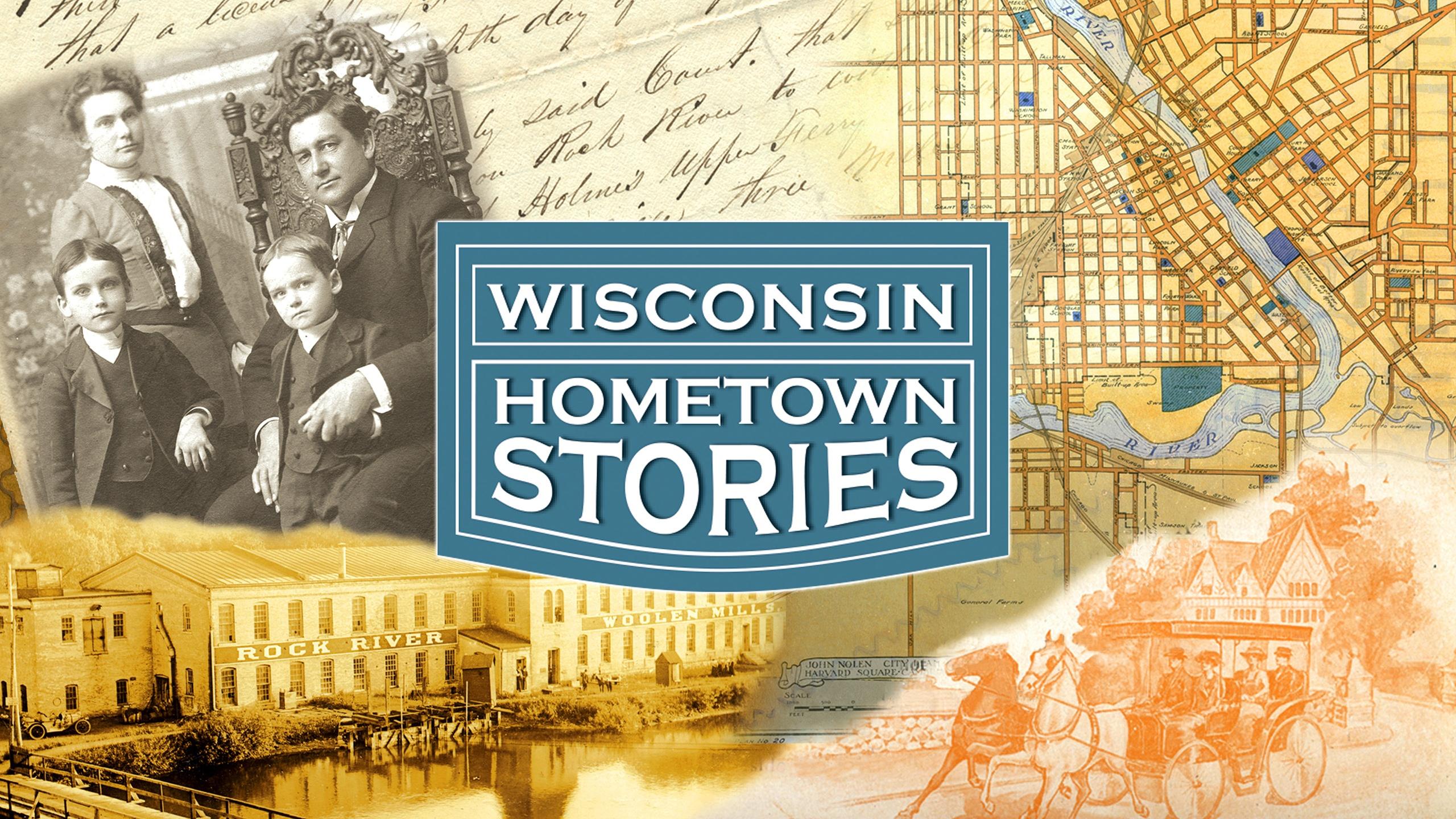– Patty Loew: Water problems in central Wisconsin are resulting in a lot of finger-pointing as the State Legislature considers new rules. Last week, we showed you how some lakes and streams in Waushara and Portage counties have vanished. This week, in Wisconsin, reporter Art Hackett investigates whether the problem is drought-related, new irrigation wells, or both. Either way, farmers are standing their ground near Stevens Point.
– Art Hackett: The Little Plover is a small trout stream running through potato fields and rural subdivisions east of Stevens Point. For the past three summers, it’s gone dry.
– Barb Feltz: The day it dried up and I came out here, the banks where there was black mud that are usually underneath the water were cracked and dried.
– Art Hackett: One county to the south near Plainfield, Long Lake, has gone from a fishing hotspot to a prairie.
– Butch Bredow: Then, it just kept going down and down and down and it was gone completely.
– Art Hackett: Unlike the sudden rupture that drained Lake Delton in the summer of 2008, the loss of Long Lake happened in slow motion. In 2000, UW-Stevens Point groundwater researcher George Kraft worried there was little water in the Little Plover. At that time, he was worried mainly about the effects from a new well drilled by the Village of Plover.
– George Kraft: We’ve done some preliminary computer modeling that show if those wells get to their design capacity, that indeed will be missing maybe as much as 40 percent of the flow out of the stream.
– Art Hackett: Kraft was concerned the area’s groundwater resources were nearing a breaking point. Nearly a decade later, Kraft says, the resource is broken.
– George Kraft: Ten years ago, I think this area here was a bubbling spring. You can see there’s a side channel here that flowed in the day. And, you know, obviously because the flows are low, we have just a few inches of water in most places. And now we can see that, you know, because the flows have been low for a significant time, we have more grass and such encroaching from the side.
– Art Hackett: The creek’s survival depends on pumped water added by farmers and canning companies. Barb Feltz, who monitors the little Plover’s Flow at an old gauging station on her property, says the reason the creek dried up is that one of the pumps keeping it alive failed.
– Barb Feltz: Right now, it’s all artificial. After the dry up with the dead fish, virtually, if they would shut it off, it would be dry.
– Art Hackett: But Kraft says those pumps which draw irrigation water from the aquifer just below the surface and others used by local villages and cities are all part of the problem.
– George Kraft: There’s been much drier periods before, and we didn’t have these kind of low water levels. The work that we’ve done attributes about a fourth of the missing water to municipal pumping, about a quarter or so then to industrial pumping, and about half to irrigation pumping.
– Brian Wolf: I believe it’s very important that you begin to take a look at the cumulative effects of a well.
– Art Hackett: Waterfront property owners and representatives of the state’s agricultural industries are both at the table as the state considers changes in Wisconsin’s groundwater law.
– Jim Burns: My father drilled the first irrigation well in 1950.
– Art Hackett: Jim Burns Sr.’s family has been farming the central sands for over 100 years. He and other vegetable growers dispute their role in the problem. He says the problem is simple. It’s been dry the last few years.
– Jim Burns: Well, that’s to my mind nothing more than a consequence of the cycles that we go through. In the past 100 years of history that I hear about from old people is those lakes have been dry before, and I’ve seen them already when the water was running across the roads around them. The problem is that there hasn’t been enough runoff. The snow in the wintertime soaks right into the ground, and the rains aren’t heavy enough to ever cause a runoff into those lakes. There’s just been no recharge from their natural sources of water.
– Art Hackett: But Tim Asplund, a water resources scientist with the Wisconsin Department of Natural Resources, says something else is at work.
– Jim Burns: There is a certain proportion of the drop that’s really not explained very well by just looking at climate and precipitation patterns, that there is a role of pumping. A certain, you know, amount is due to pumping, and a significant amount I would say in the order of, you know, a few feet, maybe three feet or maybe even more.
– Art Hackett: Burns, meanwhile, points to his own wells, such as this one near Almond. It’s been there since 1959. He says the depth of groundwater has remained unchanged. The well’s never been drilled deeper.
– Jim Burns: In spite of all that’s happened since then, the water table here is rather static.
– Art Hackett: But Asplund says a better reference is a U.S. Geological Survey monitoring well at UW’s Experimental Station in Hancock. It’s about 10 miles from Long Lake. If you go to the USGS website, the well is marked with an orange dot, meaning the water level has hit a new all-time low. The graphs show ups and downs.
– Tim Asplund: But really since about the mid-90s or so, there’s been sort of a steady decline in the water table here. We’re seeing these kind of conditions similar to what we saw in the late 50s and 60s, and this was after, this period of record here was after an extended 10-year drought, whereas really the drought conditions here have been fairly minor.
– Art Hackett: Match that against these maps prepared by UW-Stevens Point Professor George Kraft. They show a steady increase in the number of high-capacity wells over that very same time period. At Lake Huron, Chris Van Houten keeps moving his dock further and further from his house. At Long Lake, two canoes wait, lending a new meaning to the term dry docked.
– Cris van Houten: Ultimately, I do believe it’s going to result in taking out some of the irrigators.
– Art Hackett: The idea of just restricting irrigation, much less pulling out wells, concerns growers like Jim Burns.
– Jim Burns: Crops have become more valuable, and the dollar volume is quite significant. A hundred or 200 or 1,000 acres of a certain crop, you’re talking millions of dollars, and that affects everybody in the area.
– Art Hackett: And he doubts stopping irrigation would bring back the lakes.
– Jim Burns: It wouldn’t amount to no difference at all. You could quit irrigating tomorrow in the whole state, and it wouldn’t change these lakes one bit.
– Cris van Houten: And they put in much bigger irrigation systems. They’ve added new irrigation systems around here over the last few years, and they’ve killed the goose that laid the golden egg. You know, they’ve just taken more water than can be made up.
– Jim Burns: Wisconsin is blessed with plenty of water. Of all the states, you couldn’t hardly find one except maybe Michigan that has more water.
– Art Hackett: Except that water, abundant or not, is definitely not in Long Lake.
– Butch Bredow: I hope it comes back. It’d be nice if it would, but you don’t know. Nobody knows that.
– Art Hackett: The water could come back.
– Tim Asplund: It really does depend. This is where it’s not independent of climate.
– Art Hackett: Mother Nature could work a miracle, but the return of the waters could face an uphill climb.
– Tim Asplund: If we go into a wet cycle, the lakes would come up on their own, but now that there’s a potential now for more and more pumping, when there is drought, it’s probably going to continue to go even further down than what we’ve seen in the past.
– Patty Loew: Early next month, the City of Waukesha will file a formal request to divert water from Lake Michigan to replace its contaminated wells. The Great Lakes Compact allows Waukesha to pump water from Lake Michigan as long as the city has no other reasonable alternative. But what constitutes a reasonable alternative? Next week, In Wisconsin reporter Art Hackett investigates if all the options are being considered in Waukesha. We hope you’ll join us for that report next Thursday at 7 on In Wisconsin.
Search Episodes

Donate to sign up. Activate and sign in to Passport. It's that easy to help PBS Wisconsin serve your community through media that educates, inspires, and entertains.
Make your membership gift today
Only for new users: Activate Passport using your code or email address
Already a member?
Look up my account
Need some help? Go to FAQ or visit PBS Passport Help
Need help accessing PBS Wisconsin anywhere?

Online Access | Platform & Device Access | Cable or Satellite Access | Over-The-Air Access
Visit Access Guide
Need help accessing PBS Wisconsin anywhere?

Visit Our
Live TV Access Guide
Online AccessPlatform & Device Access
Cable or Satellite Access
Over-The-Air Access
Visit Access Guide
 Passport
Passport






Follow Us